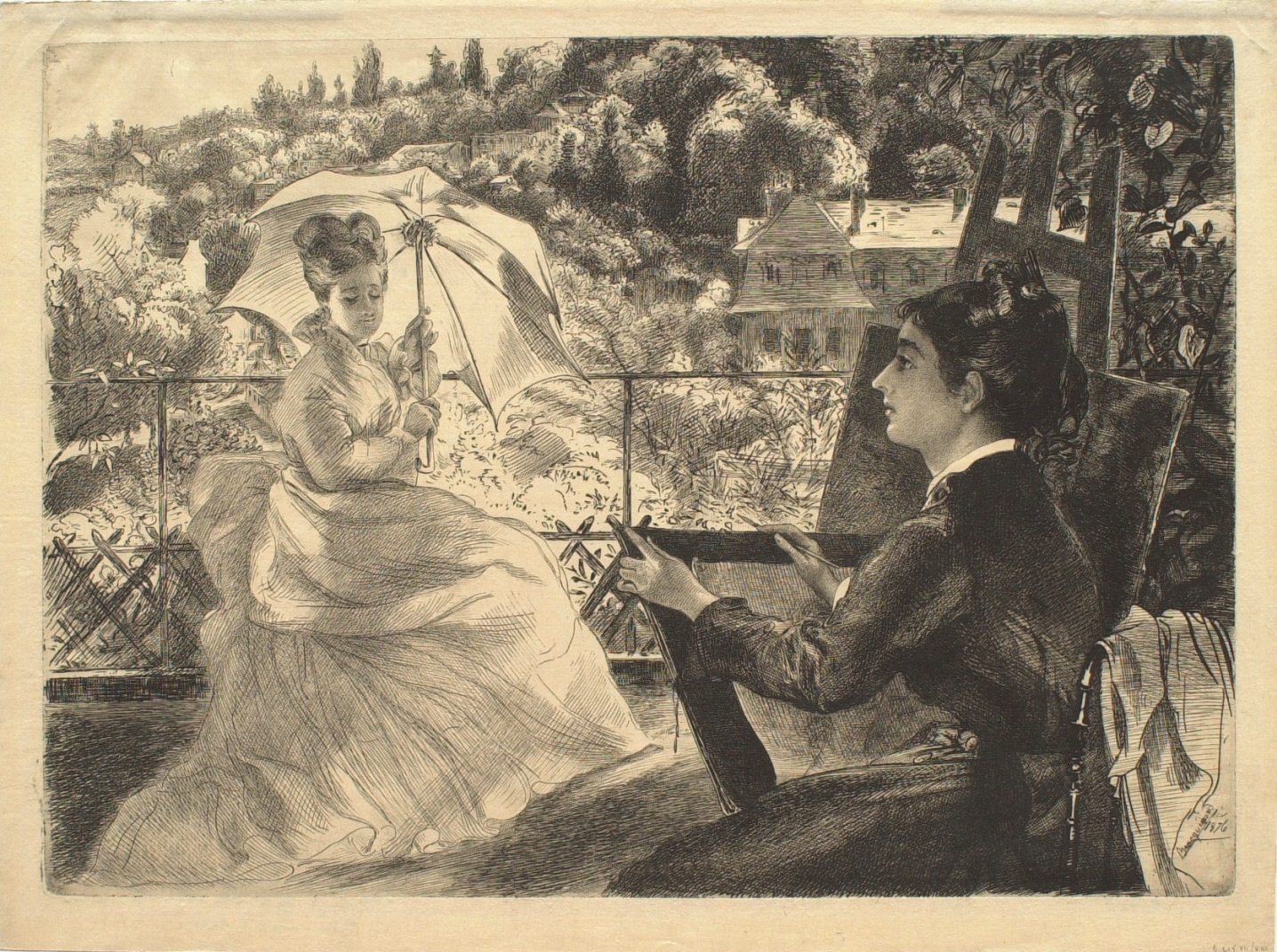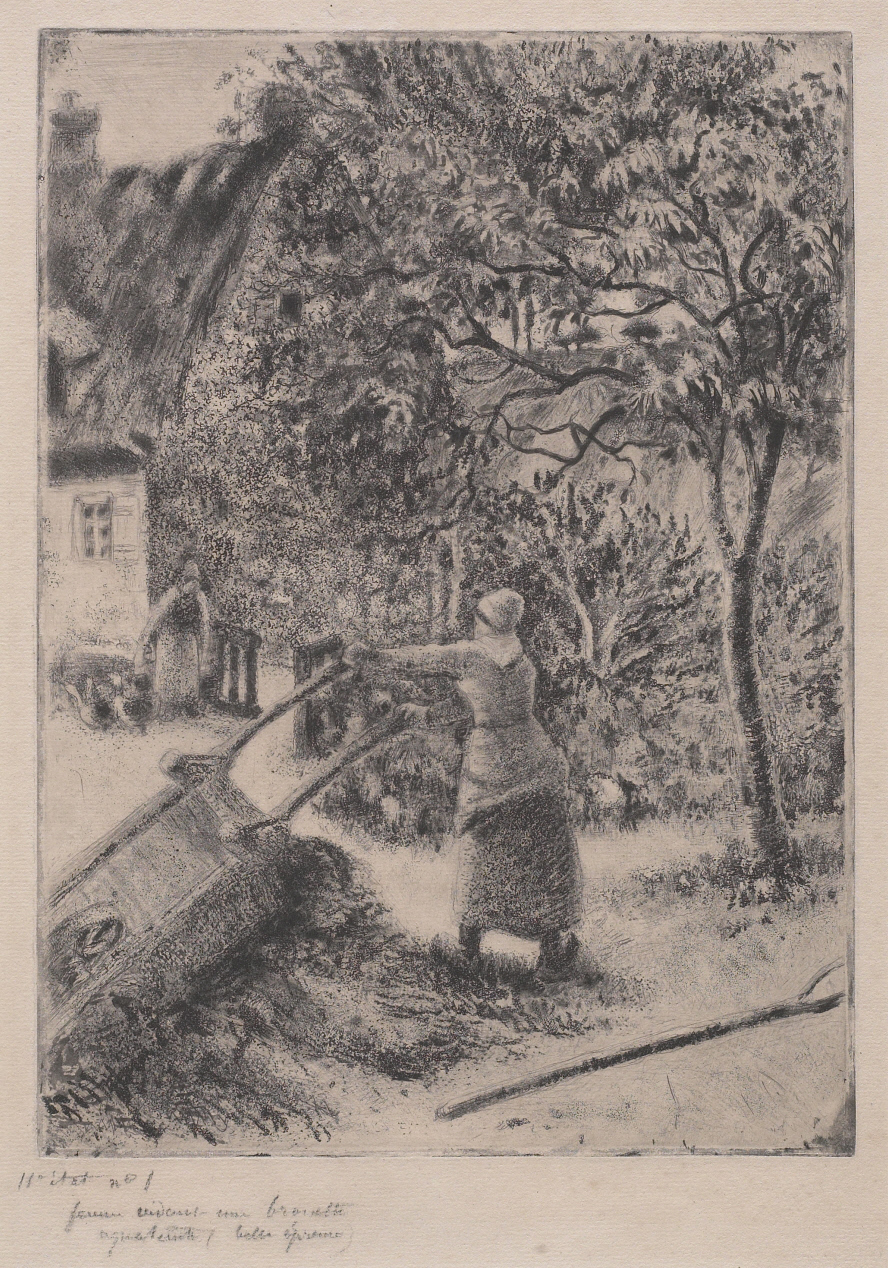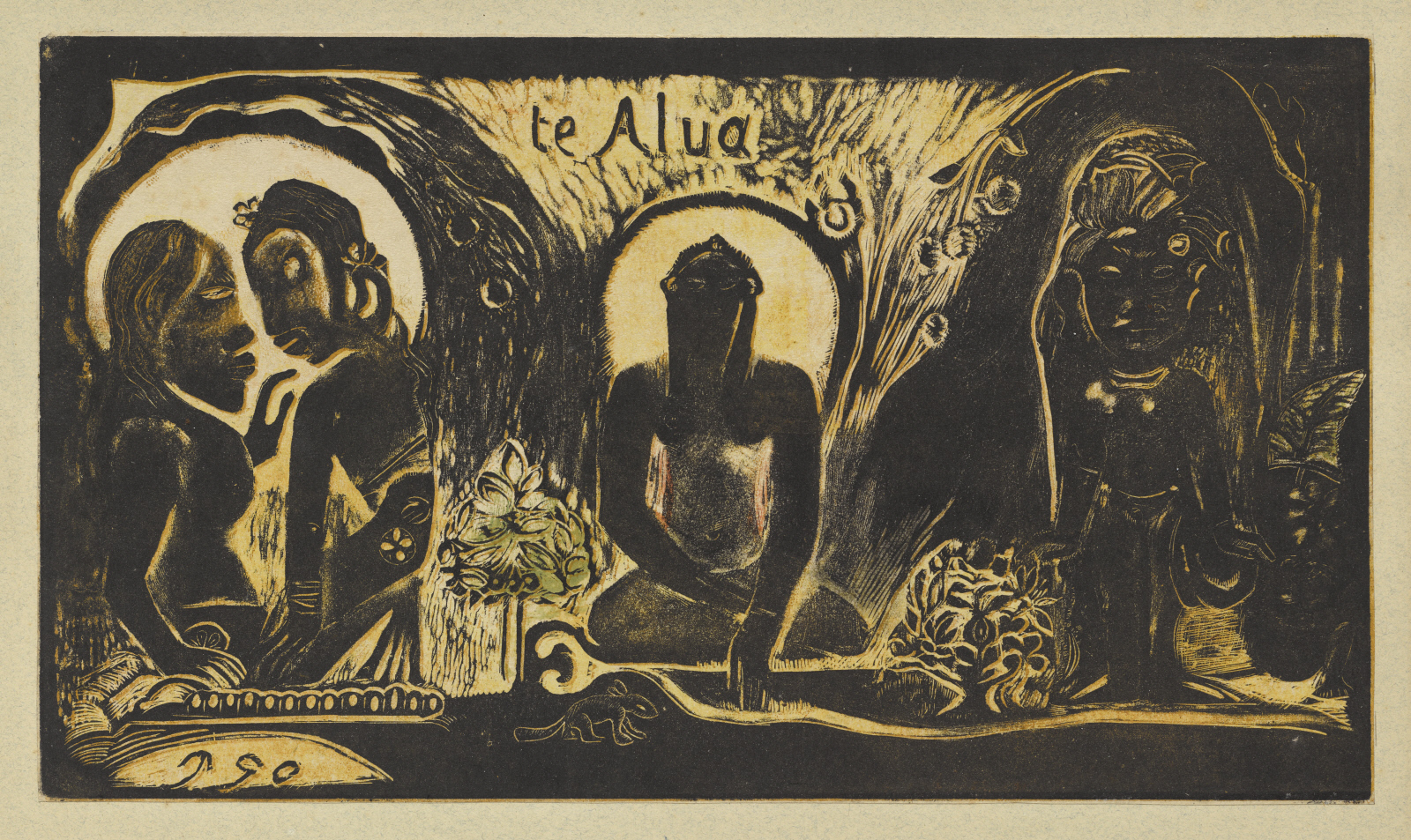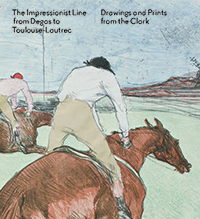
NOVEMBER 5, 2017–JANUARY 7, 2018
PRINTMAKING TECHNIQUES
ETCHING
Félix Bracquemond (French, 1833–1914)
Terrace of the Villa Brancas, 1876
Etching on paper
Acquired with funds donated by participants in the Friends of the Clark Print Seminar
Clark Art Institute, 1982.35
An etching is created by drawing an image on a wax-coated metal plate, traditionally copper but sometimes zinc, with the sharp point of an etching needle. With each incised line, the artist exposes the metal below the hardened wax layer known as the ground. When the plate is immersed in nitric acid, the chemical bath erodes unprotected areas, thus producing “bitten” or sunken lines. The artist removes the waxy ground with a solvent before spreading ink across the plate. Using a rag, the artist wipes ink from the plate’s smooth surface, leaving ink in the etched lines. Finally, the plate is covered with a sheet of dampened paper and put through a high-pressure printing press that transfers ink from within the grooved lines onto the paper, making a print.
SOFT-GROUND
Mary Cassatt (American, active in France, 1844–1926)
The Visitor, c. 1881
Soft-ground etching, drypoint, aquatint on paper
Clark Art Institute, 1967.4
The artist draws an image on a sticky ground. The artist may draw upon a sheet of paper laid over the prepared plate or place fabric, lace, or other flat media directly into the soft ground, as the coating records the texture of materials imprinted into it. After the paper or other materials are removed from the surface, the plate is immersed in an acid bath in the same manner as traditional etching before it is cleaned, inked, and printed. Depending on the texture of the paper, soft-ground lines may resemble light pencil or grainy crayon or chalk lines.
AQUATINT
Camille Pissarro (French, 1830–1903)
Woman Emptying a Wheelbarrow, 1880
Drypoint and aquatint on paper
Clark Art Institute, 1962.92
Aquatint is used as a method of creating tonal areas. The artist dusts a metal plate with powdered resin and heats the fine-grained particles to create a porous acid-resistant ground. This fine-grained coating, when bitten by acid, yields a close-knit web of tiny, irregular pockets that hold ink and create an all-over tone resembling ink wash when printed. The darkness of the tone depends upon the depth of the etching. The artist can create gradations of tone by selectively covering areas of the plate and varying the length of time in the acid bath. Artists often combine aquatint with etching.
GILLOTAGE
Édouard Manet (French, 1832–1883)
At the Café, 1874
Gillotage on paper
Clark Art Institute, 1962.82
In 1850 French printer Firmin Gillot invented a mechanical process for turning a metal lithographic plate into a relief print, meaning the raised image holds ink (the opposite of the etching technique). Later, in the 1870s, Firmin’s son Charles Gillot further developed the gillotage process by introducing photographic technologies. Using the wet collodion process, the practitioner would adhere the negative of a drawing onto a zinc plate. The image area, protected by acid-resistant resin through multiple chemical treatments, is retained in low relief while the acid bites away surrounding metal. When mounted onto a woodblock, the plate becomes easily printable with type. Gillotages print in a solid tone, unlike lithographs, which feature gradations of tone and finer details of an artist’s drawing.
LITHOGRAPH
Édouard Manet (French, 1832–1883)
Execution of Maximilian, 1868, printed 1884
Lithograph on paper
Acquired in memory of Rafael Fernandez (Curator of Prints and Drawings, 1975–1994), with contributions from his friends, colleagues, and students
Clark Art Institute, 2000.4
Lithography, which means drawing on stone, relies upon the repellant relationship between oil and water. The artist draws on a porous limestone slab (or a metal printing plate) with a greasy medium. A chemical solution of acid and gum arabic is then applied to the surface, which fixes the greasy image into the stone, establishing the image and non-image areas. In the printing process, the stone is kept wet as oil-based ink is rolled across the surface. The image attracts ink and repels water, whereas the undrawn areas attract water and repel ink. The stone is covered with a sheet of paper and put through a high-pressure printing press that transfers the drawing to the paper.
COLOR LITHOGRAPH
Henri de Toulouse-Lautrec (French, 1864–1901)
Box in the Grand Tier, 1897
Color lithograph on paper
Clark Art Institute, 1962.118
The color lithography technique requires a different stone for each color in the final print. For instance, in a color lithograph that contains red, black, and yellow ink, three stones must be created—one for each color. In order to create the image, the lithographer must register (align) it and print each stone on the paper with exact precision to layer it over the previous colors.
ZINCOGRAPH
Paul Gauguin (French, 1848–1903)
Dramas of the Sea: Brittany, from the Volpini Suite, 1889
Zincograph on yellow paper
Clark Art Institute, 1962.63
A type of lithograph, the zincograph process involves working on a zinc plate rather than more costly and cumbersome limestone. The zinc plate is prepared in a similar manner to a lithographic stone and also relies upon the repellant properties of oil and water to create the desired image.
MONOTYPE
Edgar Degas (French, 1834–1917)
The Washbasin, c. 1880–85
Monotype on paper
Clark Art Institute, 1962.39
A monotype is made by painting or drawing on an unworked printing plate with ink. The artist can make a composition by adding more and more ink to a blank plate, or by using a subtractive process, first completely covering a copper plate with ink and then selectively removing ink from areas intended to be highlights. A damp sheet of paper is placed over the drawing and both are run through a press, thereby transferring the image through pressure onto the paper. The resulting print is called a monotype—mono meaning “one,” and type meaning “impression”—because it is only possible for an artist to take one primary impression from the plate. Sometimes, an artist pulls a second impression from the plate, called a “ghost” or cognate because the residual ink from the primary impression produces a paler, less dense image.
WOODCUT
Paul Gauguin (French, 1848–1903)
Te Atua (The Gods), from Noa Noa (Fragrant Scent), 1893–94
Color woodcut on paper
Clark Art Institute, 1962.73
One of the oldest printing techniques, a woodcut is created by carving a design into a plank of wood. Artists use a variety of knives, chisels, and gouges with U- and V-shaped metal tips to remove material from woodblocks. Using a relief method, the artist cuts away certain areas, leaving the desired printing area to be inked and printed. To make a print, the artist rolls ink across the block’s surface and places a piece of paper on top of the block before either running it through the press or transferring the ink onto the paper by burnishing, or rubbing, the back of the paper.
A fully illustrated catalogue, edited by Jay A. Clarke, accompanies the exhibition. The 160-page catalogue includes essays by Mary Weaver Chapin, Jay A. Clarke, Anne Higonnet, Richard Kendall, and Alastair Wright. The catalogue is published by the Clark and distributed by Yale University Press. Call the Museum Store at 413 458 0520 to order.










